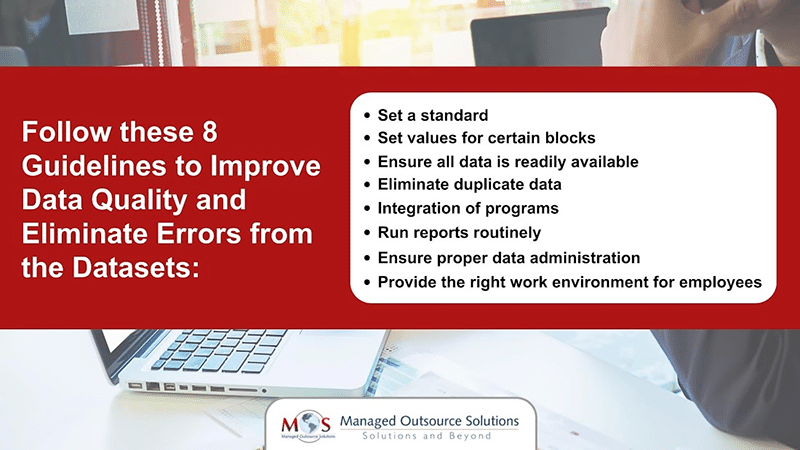Data is constantly flowing into any business organization, so it’s critical to filter and prioritize it so that executives can quickly understand and analyze the stream of data. Companies receive data in both structured and unstructured formats from a variety of sources. Most of the time, it is inaccurate, and inconsistent. Eliminating these anomalies is crucial for obtaining data insights and making crucial business choices. All inconsistent and inaccurate data can be transformed into a structured, consistent format with the aid of a data entry service.
Data quality and optimization are enhanced by accurate data. To maximize the speed and thoroughness of obtaining insightful information, data optimization is vital. It aids in the access, organization, and cleansing of data. Nonetheless, research indicates that the majority of datasets have a 6.5% error rate. These errors can be reduced with appropriate data entry and management.
There exists multiple techniques that aid in enhancing data quality and eliminating errors from datasets.
Establish a standard
The quality of data can be greatly improved by maintaining a standard for data entry. Establish guidelines for the usage of words, spelling, and abbreviations. You need to be well-versed in the kinds of data you receive and the appropriate formatting for it in order to set up standards. An American company, for instance, will gather data differently than a Chinese or Japanese company would. The two businesses will adhere to distinct standards.
Establish values
The next stage after creating your standards is to establish values for specific blocks. It can be more accurate to format values pertaining to static input consistently. For data such as states, provinces, countries, etc., drop-down menus can be created. This reduces typos and other common errors, increases accuracy, and speeds up the data entry process. Avoid using extremely tiny fields for states, countries, etc. as this would not display the entire entry and lead to needless confusion among data entry operators.
Ensure all data is collected and available
Information about each client, customer, and item should be collected; it should also be readily available. This aids in giving the data entry forms completion and structure. To prevent the information entered from becoming stale and outdated, make sure the data is kept up to date.
Avoid duplicate data
Duplicate data entry is not uncommon, which can be time-consuming and slow down data processing. Therefore, you can use duplication detection scans, which highlight any instances of duplicate data entry, to prevent data duplication. To increase accuracy, you can also create fixed value fields and key data fields. Don’t let your concern about data loss prevent you from removing duplicates.
Program integration
Companies that use a variety of systems ought to streamline the process of sharing data between programs. This reduces the possibility of data duplication while also saving time and increasing data entry efficiency.
Run reports
To enable prompt identification of errors and other problems, make sure to run test reports on a regular basis. The information required to update standards and data optimization initiatives is also provided by running reports.
Form a group for data administration
Inflating organizational systems is avoided by practicing proper data administration. They establish the unchangeable fields and oversee the standards. Data stewards, who have access to and ability to test data tools as well as perform data design simulations, can also perform this role.
Work environment
Give employees the proper space to work in order for them to be effective and productive. You should also provide rewards for high performers. Providing a positive work environment and offering appropriate ergonomics, such as cozy chairs, assist staff in working efficiently and producing data free of errors.
Best Practices for Enhancing Data Quality and Eliminating Errors in Datasets
Using high-quality data to process information effectively enables the identification of trends in consumer preferences, product performance, and customer segmentation. Business organizations can transform unstructured data into structured form by using dependable data entry services. Additionally, it aids in the removal of any inaccurate, partial, redundant, or out-of-date data sets, improving the efficacy of data analysis.In the quest for ensuring data quality and efficient data processing, it’s essential to leverage reputable data processing services that adhere to rigorous guidelines, guaranteeing accuracy and reliability in every stage of information handling.





